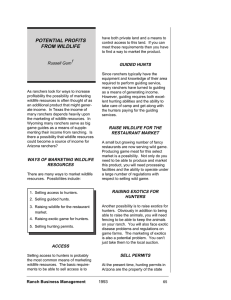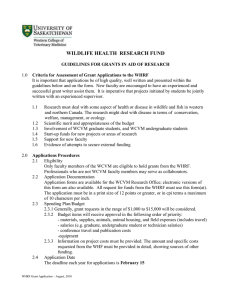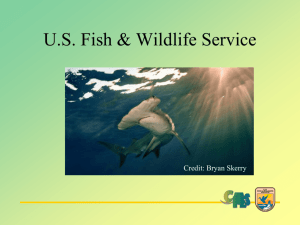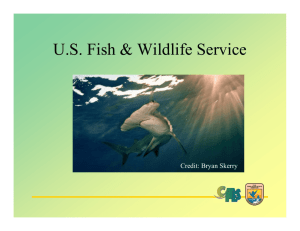Wildlife – Appendix W
advertisement
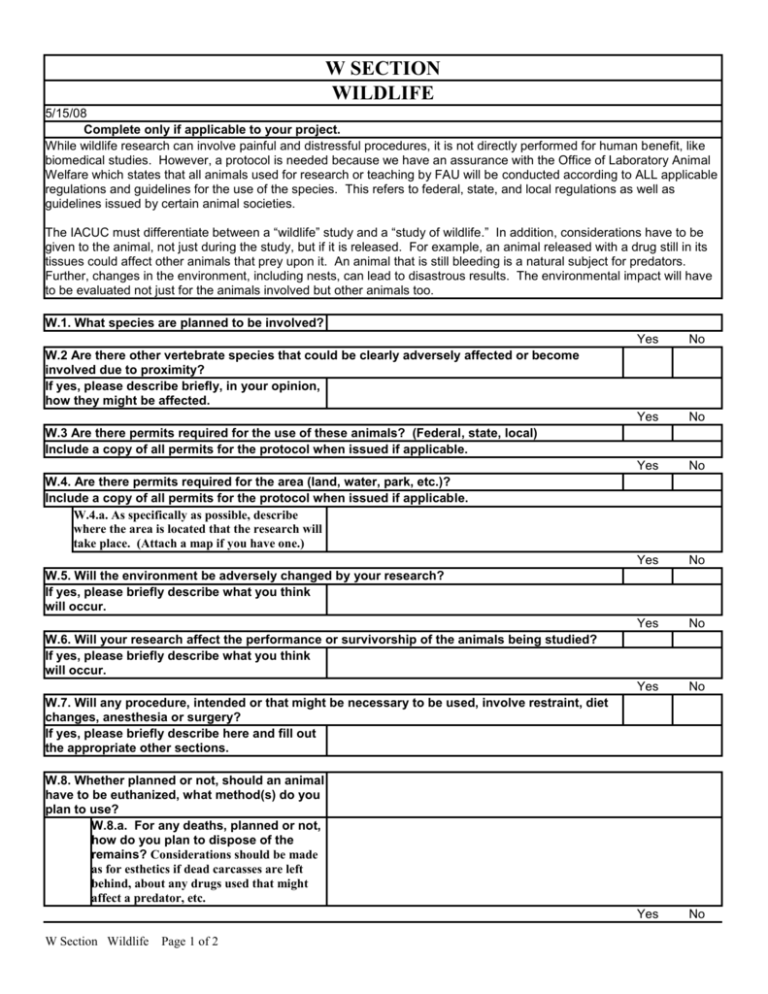
W SECTION WILDLIFE 5/15/08 Complete only if applicable to your project. While wildlife research can involve painful and distressful procedures, it is not directly performed for human benefit, like biomedical studies. However, a protocol is needed because we have an assurance with the Office of Laboratory Animal Welfare which states that all animals used for research or teaching by FAU will be conducted according to ALL applicable regulations and guidelines for the use of the species. This refers to federal, state, and local regulations as well as guidelines issued by certain animal societies. The IACUC must differentiate between a “wildlife” study and a “study of wildlife.” In addition, considerations have to be given to the animal, not just during the study, but if it is released. For example, an animal released with a drug still in its tissues could affect other animals that prey upon it. An animal that is still bleeding is a natural subject for predators. Further, changes in the environment, including nests, can lead to disastrous results. The environmental impact will have to be evaluated not just for the animals involved but other animals too. W.1. What species are planned to be involved? Yes No Yes No Yes No Yes No Yes No Yes No Yes No W.2 Are there other vertebrate species that could be clearly adversely affected or become involved due to proximity? If yes, please describe briefly, in your opinion, how they might be affected. W.3 Are there permits required for the use of these animals? (Federal, state, local) Include a copy of all permits for the protocol when issued if applicable. W.4. Are there permits required for the area (land, water, park, etc.)? Include a copy of all permits for the protocol when issued if applicable. W.4.a. As specifically as possible, describe where the area is located that the research will take place. (Attach a map if you have one.) W.5. Will the environment be adversely changed by your research? If yes, please briefly describe what you think will occur. W.6. Will your research affect the performance or survivorship of the animals being studied? If yes, please briefly describe what you think will occur. W.7. Will any procedure, intended or that might be necessary to be used, involve restraint, diet changes, anesthesia or surgery? If yes, please briefly describe here and fill out the appropriate other sections. W.8. Whether planned or not, should an animal have to be euthanized, what method(s) do you plan to use? W.8.a. For any deaths, planned or not, how do you plan to dispose of the remains? Considerations should be made as for esthetics if dead carcasses are left behind, about any drugs used that might affect a predator, etc. W Section Wildlife Page 1 of 2 W.9. Will controlled substances be used? If yes, how do you plan to protect them? Yes No YES NO W.10. Are any traps used to capture animals? If yes, discuss how you plan to ensure no animal suffers. Include monitoring, collecting, and releasing animals wanted or unwanted. Some mammals will die in a few hours so try to consider all species that might be involved in the area being used. Any animal that dies in a trap due to lack of proper monitoring or design is considered inhumane and should be reported as an “E” level pain with a full explanation. W.11 Are there hazards to personnel such as physical, chemical, disease, etc.? Discuss what considerations have been designed in your plan to protect personnel. Include vaccinations, protective gear, personal hygiene, etc. YES NO YES NO W. 12 Are there hazards to other animals such as disease spread, etc.? Discuss what considerations have been designed in your plan to protect animals. Include the use of gloves, antiseptics, etc. W.13. Have you specifically discussed veterinary coverage with the University Veterinarian? If this is a field study and you plan to use a veterinarian other than the University Veterinarian as person to cover the project, who is he/she and what are their qualifications? W.14. Discuss any other areas or make any further clarification you might think that the IACUC could use to evaluate this protocol. W Section Wildlife Page 2 of 2








